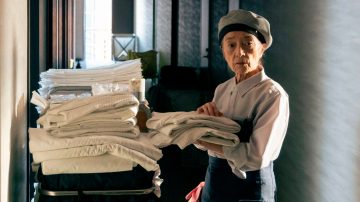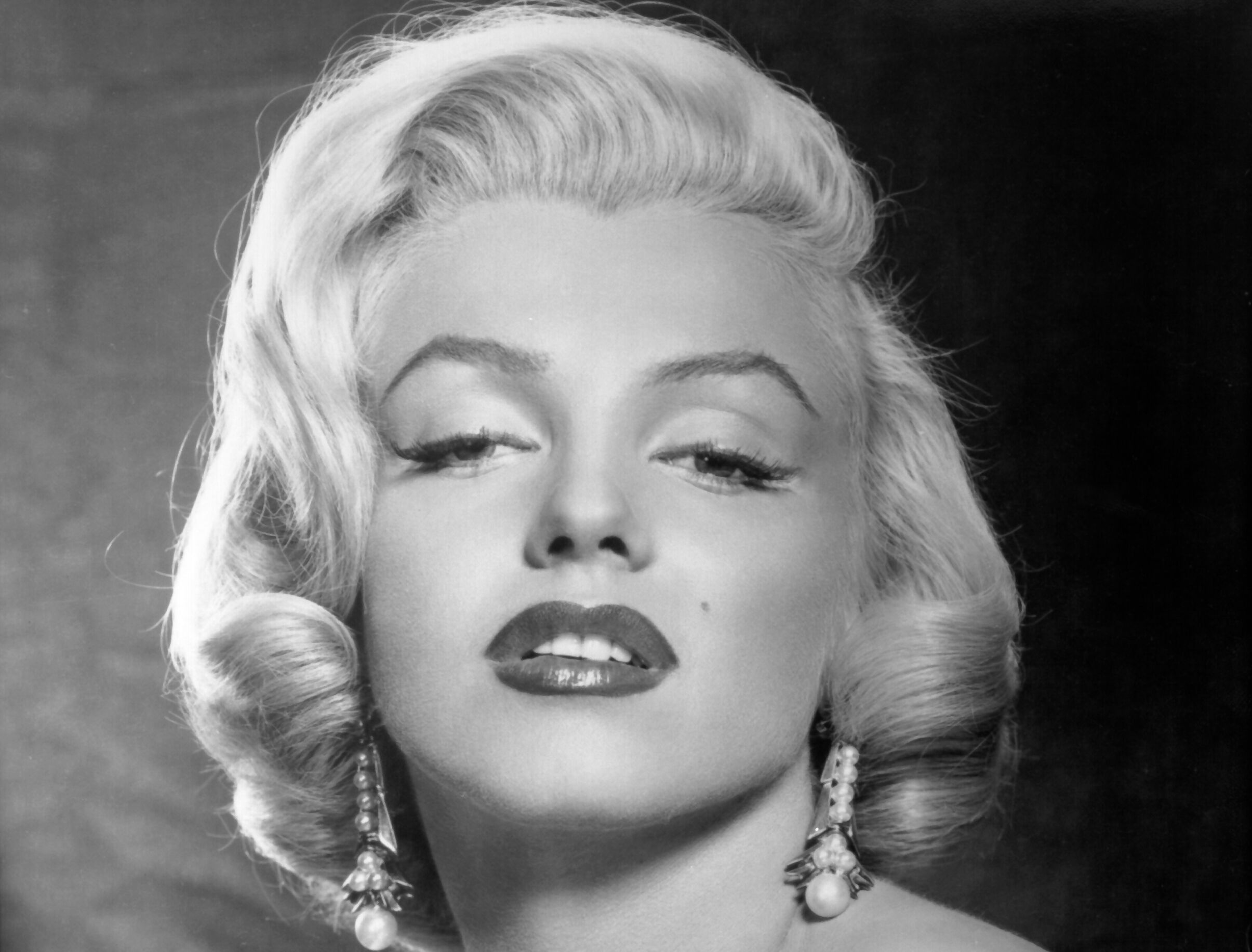
A day before this article came out, I was walking down Oxford Street when I locked eyes with Marilyn Monroe, or at least a cardboard cut-out of her. Her image was plastered all around an adult shop advertising their most recent erotic toy in the window. “A Marilyn Monroe Special Edition”, the big letters announced. It got me thinking about her image and all the ways it has been used.
Even though I hated Blonde, Andrew Dominik’s unconventional and often cruel Marilyn Monroe biopic, I must admit that I was taken aback by some scenes. At once, I was mesmerised and disgusted by the image of Monroe naked on her bed, with a phone receiver in one hand, lifeless and still.
At best, Blonde is a hypnotising collage of images that never quite form a cohesive whole. At worst, it’s a dehumanising, sexist, disgusting piece of trash. Recreating some famous shots of Marilyn in the film, Dominik is reducing the film star and notorious sex symbol to just an image, something familiar but ultimately lifeless and distant.
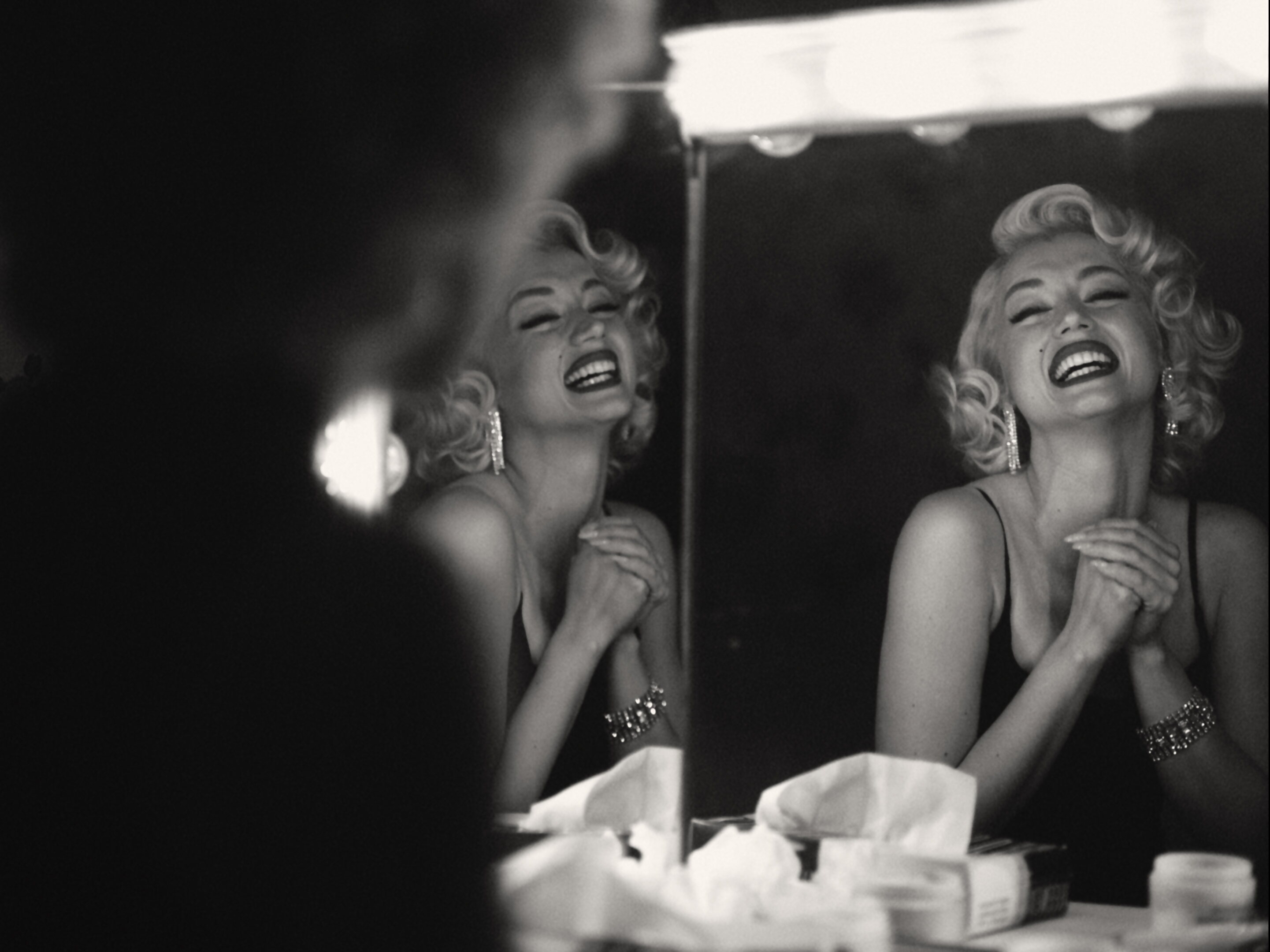
Credit: Netflix
In an interview with Sight and Sound, Dominik admitted that he wasn’t interested in reality with Marilyn but in her image. He portrays her as a doomed child, a powerless victim. She’s far from innocent, though, as is evident from the constant scenes of sex, rape and Dominik’s preference to have Marilyn appear topless in multiple settings.
The real Marilyn’s life abruptly ended after she was found dead in her bed on August 4, 1962. While we’ll never really know what happened in the hours before she was found, her death has been classified as a suicide, and ever since, Hollywood has profited from her image.
And she isn’t the only one.
Sharon Tate, who tragically was murdered by members of Charles Manson’s cult, has similarly been portrayed in films, time and time again. As we mentioned here, Quentin Tarantino presented a strange, revisionist account of Tate as she’s saved at the end of his film Once Upon A Time… In Hollywood.
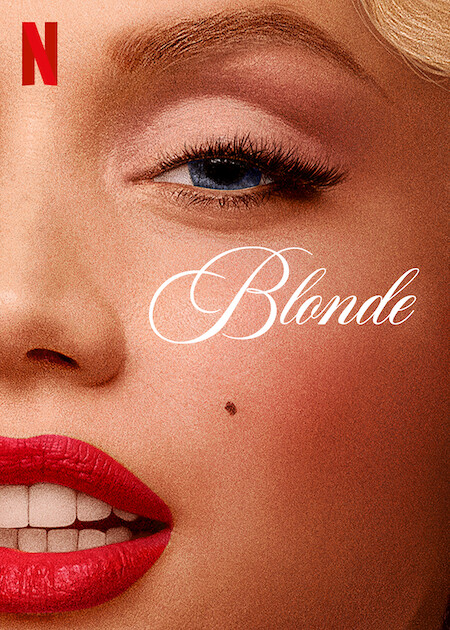
Credit: Netflix
Both women have been exploited, and Blonde is just the most recent example of Hollywood making a profit on someone’s image without their consent or their say on how they are projected to a paying audience.
Is Blonde based on true events?
Blonde is based on Joyce Carol Oates’ novel of the same name, and Oates has always been clear that her book is a work of fiction. Netflix’s little blurb on Blonde also has the word ‘fictionalised’.
Some events are wholly made up, while some have roots in reality. For example, there is no objective evidence that Monroe had any abortions, especially studio-mandated ones. Dominik places a camera inside Monroe’s vagina as a doctor places a speculum inside her and also has a CGI fetus begging for Monroe not to hurt it.
Planned Parenthood has hit back against these scenes and has called the film “anti-abortion propaganda”. It’s hard to disagree, but there are so many things in Blonde that enrage. One would simply run out of energy less than halfway through the film.
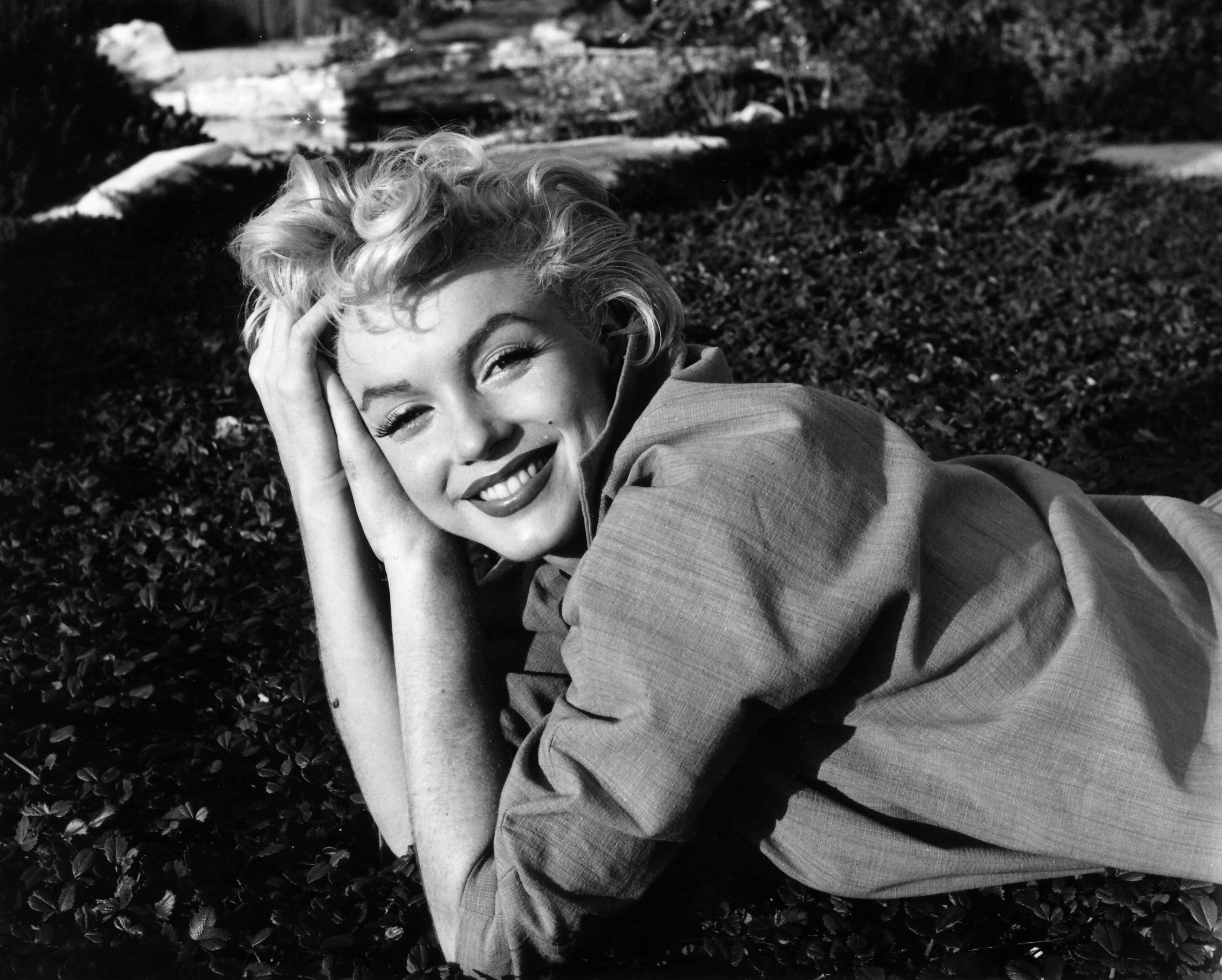
Credit: Baron/Hulton Archive/Getty Images
Monroe did, however, suffer from endometriosis – something not mentioned in Dominik’s film – and suffered multiple miscarriages. One of these made it into the film, although the circumstances – she trips on the beach – seem fictional.
The film also starts by showcasing Marilyn’s violent and troubled childhood. Fact is again mixed with fiction; Marilyn’s mother, Gladys, suffered mental health issues and was admitted to an institution, but there is no evidence of her ever trying to drown her daughter, as depicted in the film.
Perhaps Blonde invites us to interrogate what we consider accurate and what the role of a fictional film is that portrays real people. What responsibility, if any, did Dominik have to show Marilyn and her image fairly and correctly?
Sharon Tate and Once Upon A Time… In Hollywood
You may remember one of the most awkward press conferences from Cannes 2019 as Quentin Tarantino premiered his new film, Once Upon A Time… In Hollywood. Margot Robbie memorably played Tate in Tarantino’s film and illuminated the screen with her star power. A press member asked about Tarantino’s choice not to give Tate much dialogue in the movie. Tarantino heatedly hit back at the notion that his film might be seen as misogynistic in some way, saying, “I reject your hypothesis!”
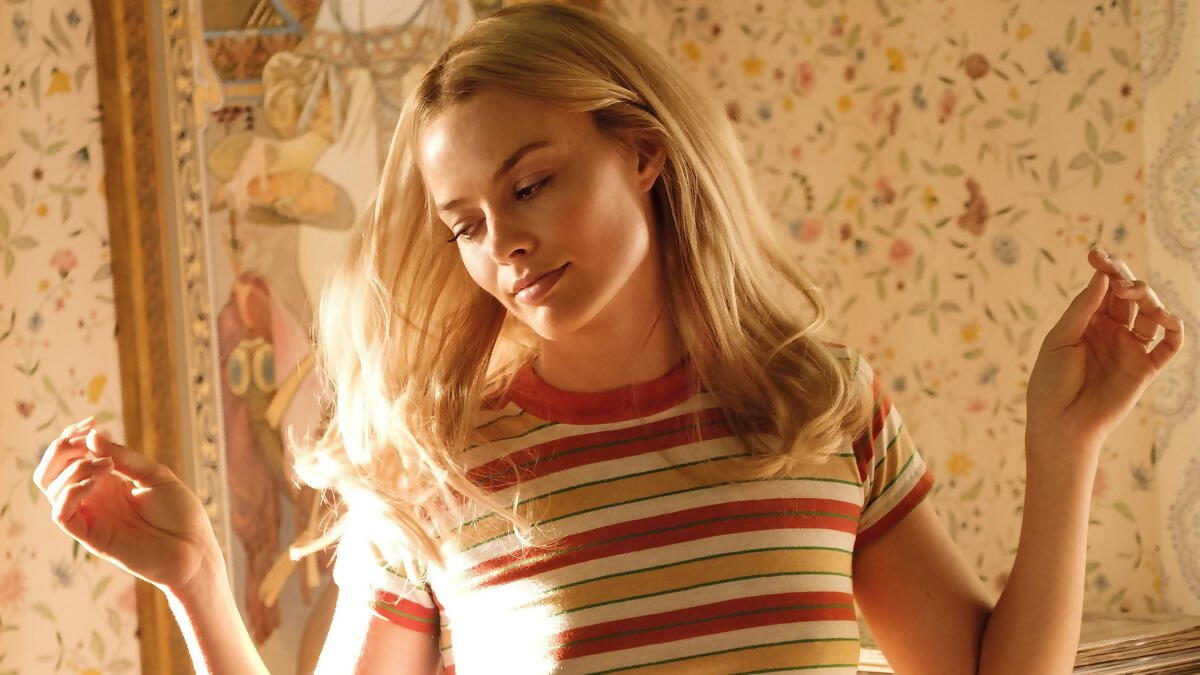
Margot Robbie as Sharon Tate in Once Upon A Time… In Hollywood. Credit: Sony Pictures Releasing
Similarly to Marilyn, Sharon Tate has become an icon in Hollywood. Several actresses have played her in films, and her tragic fate continues to fascinate filmmakers. Hollywood has also been fascinated with its own history and drawn to the uglier parts of it. Both Marilyn and Tate offer filmmakers the opportunity to revisit their fates and save them, literally or figuratively.
Hilary Duff played Tate in The Haunting of Sharon Tate, another film that at first seems to save Tate from her eventual real-life fate, only for her to find her own corpse and realise she is, in fact, a ghost roaming the afterlife and reliving her trauma. In Wolves At The Door, a more straightforward retelling of the murders committed by the Manson clan, Tate is violently dragged away as we helplessly watch on.
Both Monroe and Tate have become figures of the past that need saving. They’re frightened little girls, doomed from our perspective and privileged hindsight. They represent the loss of innocence; Tate was pregnant when she died, and Marilyn had struggled with her mental and physical health for years.

Hilary Duff in The Haunting of Sharon Tate. Credit: Saban Films
Their specific brand is a tragedy; a brilliant talent wasted, a life cut too short. It’s a way for Hollywood to almost atone for their past sin of not protecting these women, offering them fame, fortune and salvation in death on the big screen.
Who Owns Marilyn Monroe’s Estate?
The question of how Blonde could be made, and by extension anything about Sharon Tate, is a question of legality. Marilyn was unmarried and didn’t have children at the time of her passing, and in her will, Marilyn left 75 per cent of her estate to her acting coach, Lee Strasberg and his wife. After Strasberg’s wife died, he married Anna Mizrahi, but when Strasberg himself died in 1982, Mizrahi inherited the estate and was able to monetise it. She eventually hired CMG Worldwide to handle Marilyn’s image and its licensing.
But here’s the thing. You don’t always need an estate’s permission to produce art about people. It’s trickier when your subject is alive and kicking, but the Right To Privacy, a legal right to have a reasonable degree of privacy, expires when you die.
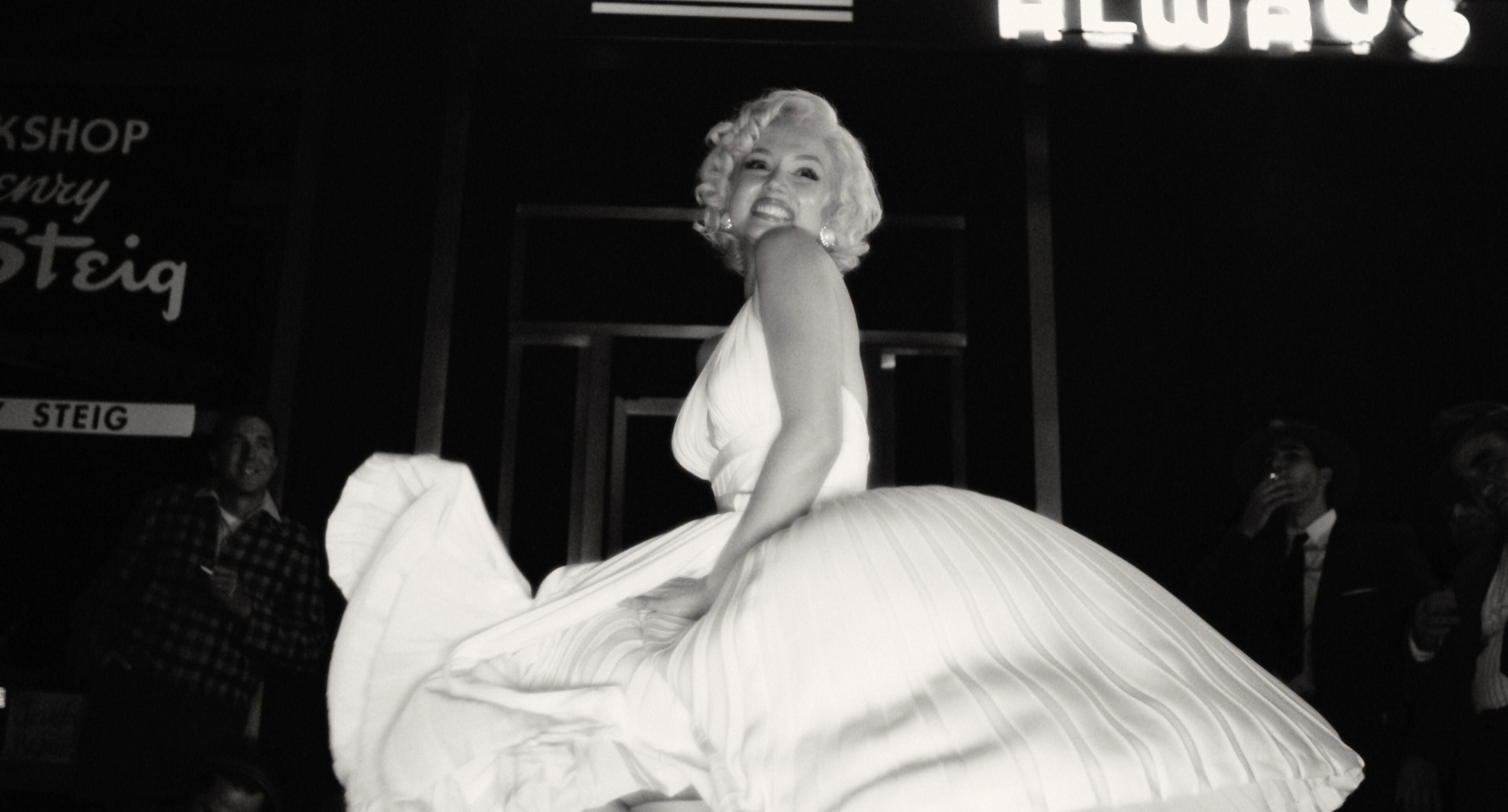
Credit: Netflix
With that in mind, Marilyn lived a very public life, so any work of fiction could freely portray her. Joyce Carol Oates was able to write her book, which was only loosely based on Marilyn’s life. But it is also also a complete work of fiction. Fiction in which people like Joe DiMaggio (Marilyn’s second husband) or Arthur Miller (Marilyn’s third husband) aren’t explicitly named but just implied.
Why Is Blonde Such a Big Deal?
With a flashy premiere at the Venice Film Festival, Andrew Dominik’s film was destined for greatness until the scathing reviews came in. It’s a film that insists on stripping Marilyn from any real agency and power. Did you know that she co-founded a production company? You would never know from Dominik’s film, which ultimately leaves out anything that doesn’t go with his chosen image of a victim he has assigned for Marilyn.
For Dominik, Marilyn is both a victim and the reason for her downfall. She’s angelic and innocent but calls her lovers ‘Daddy’ with pouty lips, engages in steamy threesomes, and fellates the President of the United States on command. It’s a conflicting, deeply misogynistic image of Marilyn, who was much more complex in real life. There is no honest attempt to understand or humanise her, only to victimise and sexualise. She remains an object for Dominik and audiences around the world.

Andrew Dominik’s Blonde has proven to be controversial. Credit: Netflix
It’s not just women whose stories have been on the receiving end of the Hollywood treatment. Martin Luther King Jr. continues to be a popular figure, and there’s a brand new film about the tragic death of Emmett Till that is about to screen at the London Film Festival. You may notice a pattern here, but that’s a whole different article.
We’re drawn to tragedy, always have been and always will be. Blonde is only just the most recent example of how we can market tragedy porn as high art and use someone’s image for profit. Vision does not equal excellence, as is evident in Dominik’s film. It’s time we do better, by Marilyn.



